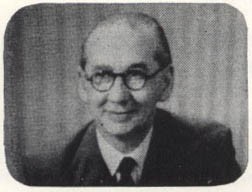More actions
Following service in World War II, John Cura — born Alberto Giovanni Curà on 6 April 1902 — worked out an efficient method for taking pictures of television programmes while they were being broadcast in the PAL format. In the days before video recorders were commonplace, this gave him the basis for a unique business. He — and really he alone — could offer a cheap record of at least some of the frames of British television programmes. This allowed actors to prove they'd been in a production, directors to retain at least a contact sheet of their work, and newspapers to have images of important news events that had been broadcast on television.

The resulting photographs, which he dubbed "tele-snaps" (or telesnaps), became vital to Doctor Who fans after many 1960s episodes were wiped. For some episodes, they are the only remaining visual record.
Because he is so important to early Doctor Who, some fans believe that he somehow worked for the British Broadcasting Corporation or the Doctor Who production office, but this wasn't the case at all. He simply turned on the televisions in his home and took pictures of whatever they were transmitting. He then offered the resulting telesnaps for sale. But the production office didn't have to buy them, and after he raised his prices in 1964, the BBC were in fact less inclined to purchase them.
The price rise unhelpfully coincided with the BBC's first efforts at simply telerecording entire episodes from the 2" quad masters, and so his business was actually in decline at the time most Doctor Who fans wrongly think he was primarily active. In fact, though, his career had resulted in perhaps as many as half a million telesnaps of hundreds of different programmes. Cura was a major figure in the documentation of British television from the late 1940s to the early 1960s.
He worked nearly to his death on 21 April 1969, but his work didn't significantly survive him. His widow offered his entire catalogue of negative and prints to the BBC, and they bluntly refused. Feeling rudely dismissed, his widow burned the entire collection. Not only was this a significant cultural loss to British television historians, it almost certainly had implications for Doctor Who fans as well. Although we'll never know for sure, it's almost certain that Cura took telesnaps of at least some serials that today we think of as being without telesnaps.
The reason is simple: we know the BBC weren't his only buyers. A known case in point is Marco Polo. Although the Beeb bought these tele-snaps, they are known to have discarded them. The ones currently present on the Doctor Who website come not from the BBC archives, but because director Waris Hussein personally bought copies directly from Cura. Thus it seems reasonable to assume that Cura took telesnaps of, say, The Myth Makers, but simply didn't find a buyer for them.
